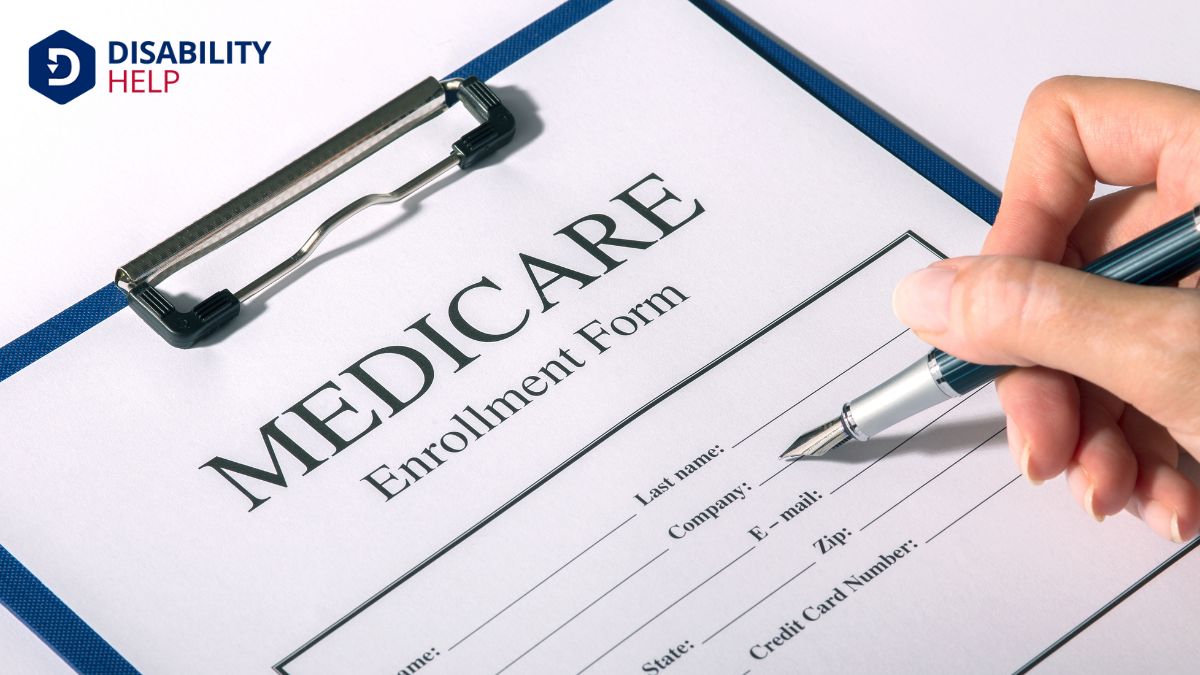When considering accessibility solutions like stair lifts, many of us wonder if Aetna Medicare covers these essential devices. Since stair lifts often fall under home modifications instead of durable medical equipment, they usually aren't covered. However, coverage can vary based on medical necessity and specific plan details. How can we navigate these complexities and explore alternative funding options? Let's uncover the steps to guarantee accessibility needs are met.
Key Takeaways
- Aetna Medicare typically does not cover stair lifts as they are considered home modifications.
- Medical necessity documentation from a healthcare provider is required for consideration of coverage.
- Coverage for stair lifts can vary based on specific Aetna Medicare plan details.
- Verify durable medical equipment terms in your policy for potential stair lift coverage.
- Contact Aetna directly to clarify any uncertainties regarding stair lift coverage.
Understanding Aetna Medicare Plans

When it comes to steering Aetna Medicare plans, understanding the basics can make a significant difference in choosing the right coverage.
We recognize that maneuvering through Medicare options can feel overwhelming, but by focusing on key elements, we can simplify the process. Aetna Medicare offers various plans, including Medicare Advantage, Part D (prescription drug coverage), and Medigap (supplemental insurance). Each plan serves different needs, so identifying what matters most to us is essential.
Consider factors like prescription costs, preferred providers, and potential out-of-pocket expenses.
Comparing plan benefits and costs helps guarantee we select coverage that aligns with our healthcare needs and budget. By equipping ourselves with this knowledge, we empower ourselves to make informed decisions that lead to better health outcomes and financial peace of mind.
What Are Stair Lifts and Their Importance?
Let's explore stair lifts and their significance in our lives.
A stair lift is a motorized chair that travels along a rail mounted to a staircase, providing a safe way for individuals with mobility issues to navigate between floors.
Stair Lifts Definition
Stair lifts serve as an essential innovation for individuals with limited mobility, allowing them to safely navigate stairs with ease. These devices consist of a motorized chair or platform attached to a rail, which is installed along the side of a staircase. With just a simple press of a button, the stair lift glides up and down, providing a secure and comfortable ride.
We understand that mobility challenges can be intimidating, and stair lifts offer a practical solution to regain independence within the home.
They're designed to accommodate various staircases, whether straight or curved, ensuring accessibility for different needs. By incorporating safety features such as seatbelts and footrests, stair lifts prioritize user safety, making them a valuable addition for those who require additional support.
Benefits of Stair Lifts
Recognizing the importance of stair lifts in enhancing mobility, we can appreciate the numerous benefits they bring into our lives.
Stair lifts provide a safe and reliable way for individuals with mobility challenges to navigate stairs, reducing the risk of falls and injuries. They offer independence, allowing us to move freely between floors without assistance. This freedom is particularly empowering for those wanting to age in place.
Additionally, stair lifts can alleviate the physical strain on caregivers, making their support roles more manageable. They’re easy to use, with simple controls that anyone can operate.
Installing a stair lift can transform our homes into more accessible spaces, giving us peace of mind and improving our overall quality of life. They're truly a worthwhile investment.
Coverage Criteria for Durable Medical Equipment
When considering coverage for durable medical equipment (DME) like stair lifts under Aetna Medicare, it’s crucial to understand the specific criteria that must be met.
First, the equipment should be medically necessary, which means it must assist a medical condition or improve a physical function. Next, a healthcare provider must prescribe the DME, confirming its necessity for the patient's well-being.
We should also check if the equipment is appropriate for home use and if Aetna recognizes it as covered DME. The supplier of the stair lift must be enrolled in Medicare to guarantee proper billing and payment.
Understanding these criteria helps us navigate the intricacies of coverage and guarantees we're prepared when discussing options with healthcare providers or insurers.
Aetna Medicare's Policy on Stair Lifts
Let's explore how Aetna Medicare handles stair lift coverage and what that means for us.
We'll look at the specific criteria they use to determine eligibility and also consider some alternative options for improving home accessibility.
Understanding these details helps us make informed decisions about our mobility needs.
Coverage Criteria Explained
Although mobility can be a concern for many seniors, understanding Aetna Medicare's policy on stair lifts is essential for those seeking assistance.
We recognize that maneuvering through insurance policies can be challenging, so let's break down the criteria. Aetna Medicare often requires documentation from a healthcare provider stating that a stair lift is medically necessary. This means that the stair lift should be vital for improving daily living activities or preventing further health issues.
Unfortunately, stair lifts are typically classified under home modifications, which aren't always covered. However, it's important to check specific plan details, as coverage can vary.
Alternatives for Accessibility
While stair lifts mightn't always be covered under Aetna Medicare, there are other options to enhance home accessibility that we can explore.
Let's consider installing ramps, which can provide an effective solution for those using wheelchairs or walkers. Portable ramps are flexible and can be moved as needed.
Alternatively, a home elevator could be an option, offering a smoother journey between floors.
We might also think about widening doorways to accommodate assistive devices, or installing grab bars for better mobility support in critical areas like bathrooms.
Checking with local organizations can uncover grants or financial aid available for such modifications.
Steps to Verify Stair Lift Coverage
To verify stair lift coverage under Aetna Medicare, we need to start by gathering all relevant policy documents and details.
Let’s carefully review the specific terms and conditions outlined in our policy. We should pay close attention to any sections that mention durable medical equipment, as stair lifts may fall under this category.
Next, we’ll contact Aetna’s customer service for clarification. When we call, let’s have our policy number handy to streamline the process.
It’s helpful to ask specific questions about stair lift coverage and any potential requirements we must meet, such as medical necessity documentation from a healthcare provider.
Finally, we can confirm coverage by checking Aetna’s online member portal, where additional resources and personalized information might be available.
Exploring Alternative Funding Options
When verifying stair lift coverage under Aetna Medicare proves challenging, exploring alternative funding options becomes vital.
We recognize how significant it's to find solutions that guarantee accessibility and safety in our homes. Let’s investigate some potential avenues:
- State Assistance Programs: Many states offer programs that assist with home modifications for seniors and individuals with disabilities.
- Veterans Benefits: If we're veterans, specific programs through the VA may provide financial support for home modifications, including stair lifts.
- Nonprofit Organizations: Organizations like Rebuilding Together or the National Council on Aging might offer assistance or resources.
- Payment Plans: Some suppliers offer payment plans that allow us to spread the cost over time, making it more manageable.
Tips for Navigating Coverage Denials

Encountering a coverage denial for a stair lift under Aetna Medicare can be frustrating, but we've several strategies to tackle this hurdle effectively.
First, review the denial letter carefully to understand the reasons behind it. Often, it’s about missing documentation or not meeting specific criteria.
Let’s gather and organize all necessary medical records and letters from healthcare providers to support our case. We should contact Aetna Medicare directly to discuss the denial and request a detailed explanation.
It’s essential to ask about any additional information they require. If needed, we can file an appeal. Document every conversation, keeping records of dates, names, and details.
Persistence and clear communication can make a significant difference in overturning the denial.
Conclusion
In summary, as we navigate the complexities of Aetna Medicare coverage, it's essential to remember that stair lifts typically aren't covered. However, we shouldn't lose hope. By reviewing our specific plan details and consulting with Aetna, we can clarify our options. Let's also explore alternative funding sources and local financial aid options to make our homes more accessible. Together, we can find the solutions we need to enhance our mobility and independence.
The post Does Aetna Medicare Cover Stair Lifts? appeared first on Resources on Disability Assistance: Your Rights and Benefits.
source https://www.disabilityhelp.org/does-aetna-medicare-cover-stair-lifts/

